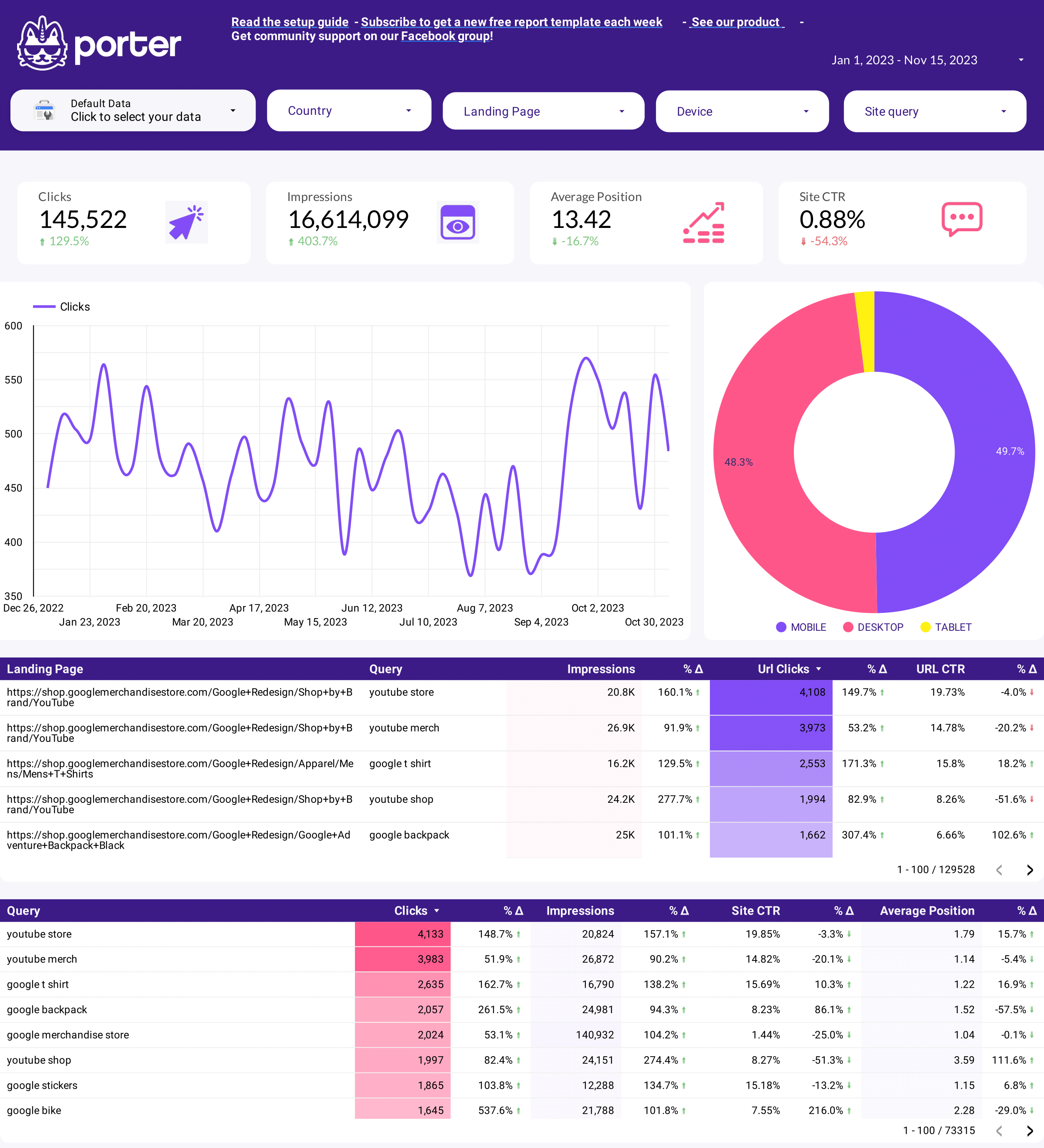
SEO Dashboard template
The SEO Dashboard Template is designed to streamline your SEO strategy by integrating data from Google Search Console and other analytics tools. This template provides a centralized view of your website’s performance metrics, enabling data-driven decisions for content marketing and branding.
Features include:
- Google Search Console Integration: Automatically pull search performance data to monitor clicks, impressions, and average position.
- Content Performance Analysis: Evaluate the effectiveness of your content marketing efforts by tracking page views, bounce rates, and user engagement.
- Brand Visibility Metrics: Assess your brand’s online presence with insights into search queries and audience demographics.
Utilize this dashboard to align your SEO efforts with business objectives, ensuring a cohesive approach to improving search rankings and online visibility.
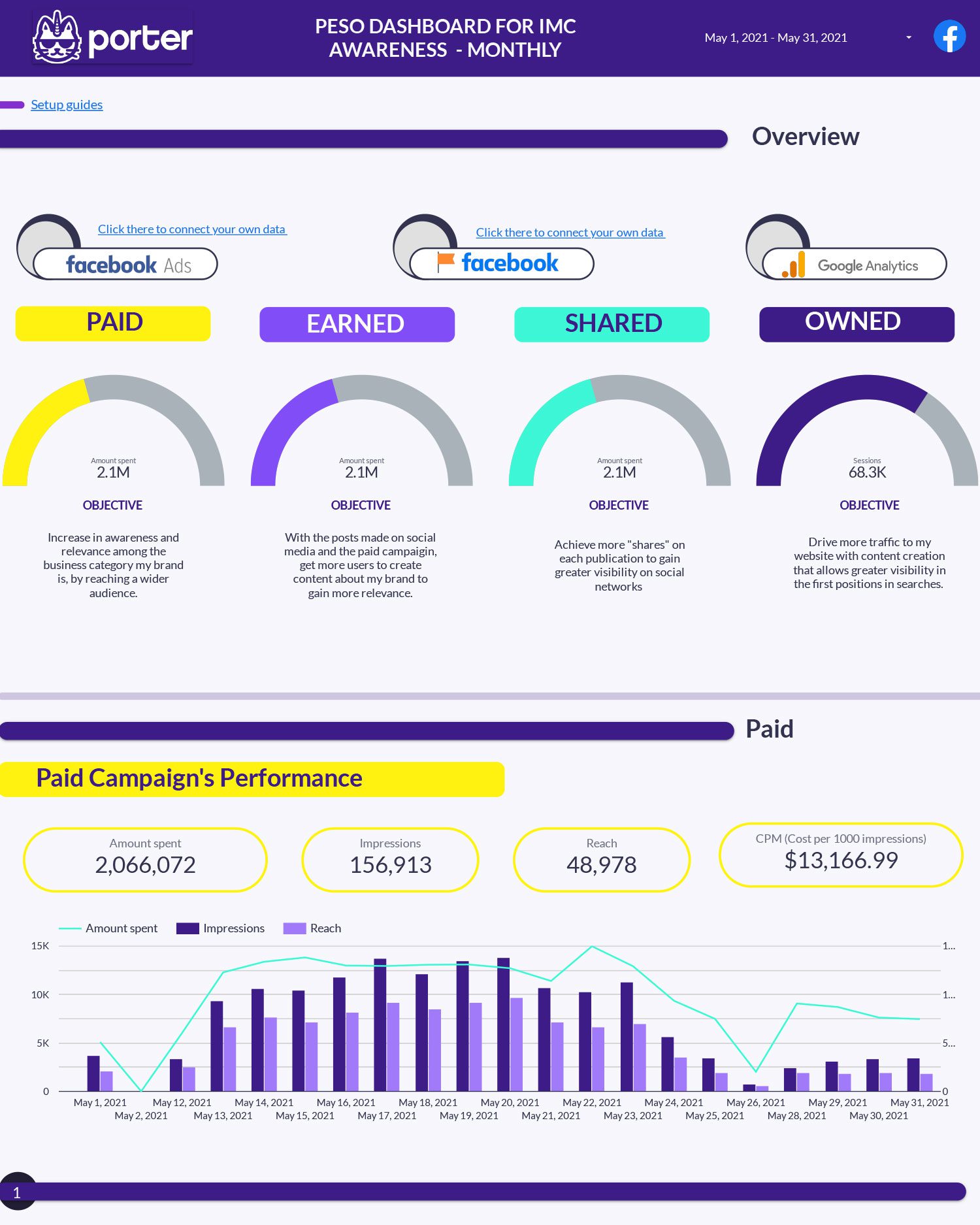
Peso model Dashboard template
The PESO Model Dashboard template provides a structured approach to analyzing and managing your social media and digital marketing efforts. This template integrates various platforms and metrics to offer a holistic view of your marketing performance.
Social Media Insights are gathered from platforms like Instagram, Facebook, LinkedIn, Pinterest, and TikTok. These insights help in understanding audience engagement and content reach.
- Instagram Insights: Track follower growth, engagement rates, and content interactions.
- Facebook Insights: Analyze page views, post reach, and audience demographics.
- LinkedIn Pages: Monitor page followers, post performance, and professional engagement.
- Pinterest: Evaluate pin impressions, saves, and audience trends.
- TikTok: Assess video views, likes, and follower activity.
E-commerce Metrics are integrated to track sales conversions and customer interactions across social platforms, providing a direct link between social media efforts and revenue generation.
SEO Performance is monitored to ensure that content is optimized for search engines, driving organic traffic to your digital assets.
This dashboard template is designed for marketers looking to streamline their reporting process and gain actionable insights from their digital marketing activities.
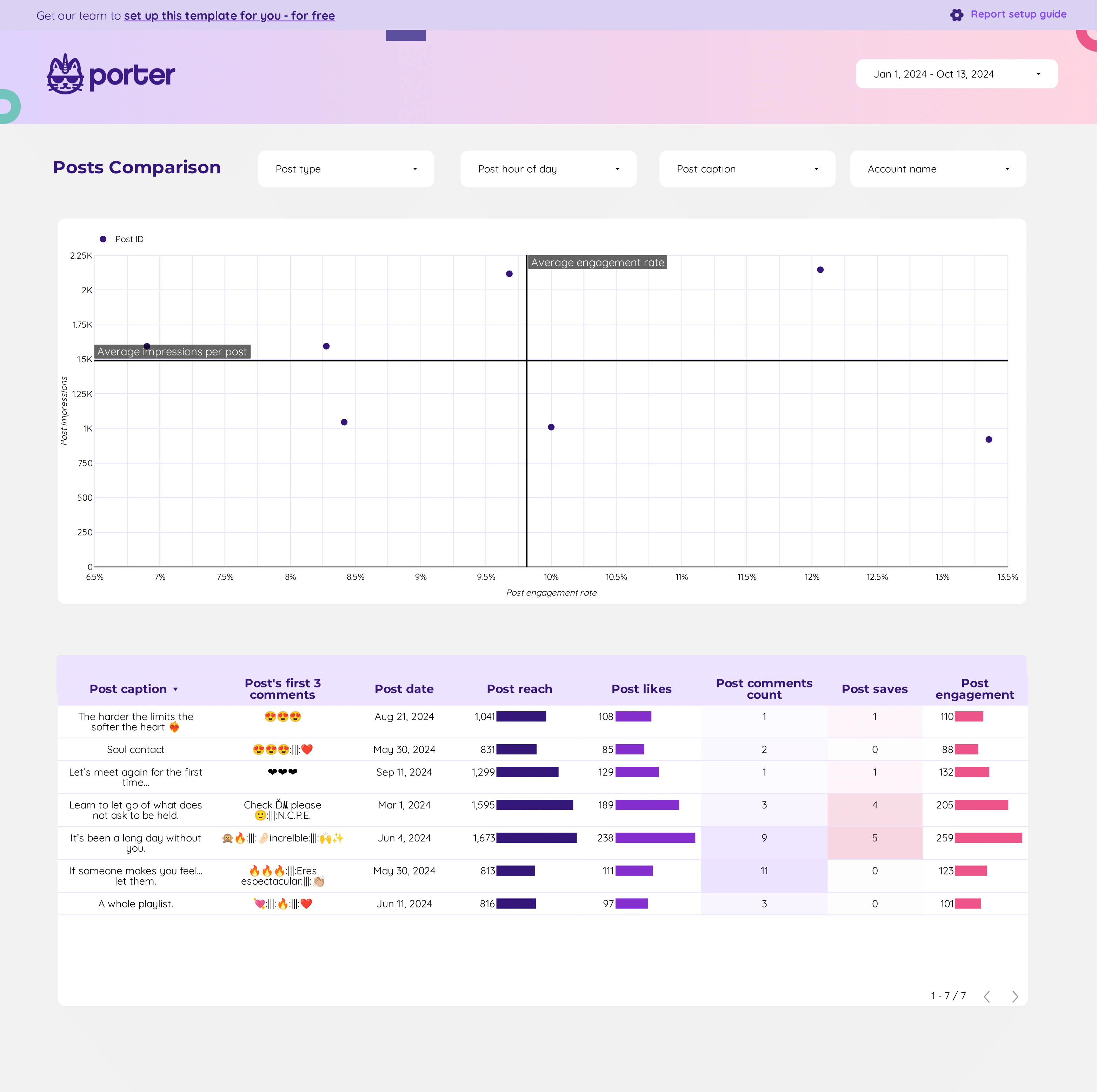
Content performance Dashboard template
The Content Performance Dashboard template integrates data from multiple social media platforms and analytics tools to provide a detailed overview of content metrics. This dashboard is designed for marketers and analysts who need to track and analyze content performance across various channels.
Data Sources:
- Google Analytics 4
- Instagram Insights
- Facebook Insights
- LinkedIn Pages
- Google Business Profile
- TikTok
Features:
- Aggregated metrics from multiple platforms
- Visual representation of engagement trends
- Comparative analysis of content performance
- Customizable views for specific social media channels
This dashboard template is essential for tracking social media content performance, providing insights into audience engagement, reach, and conversion metrics.
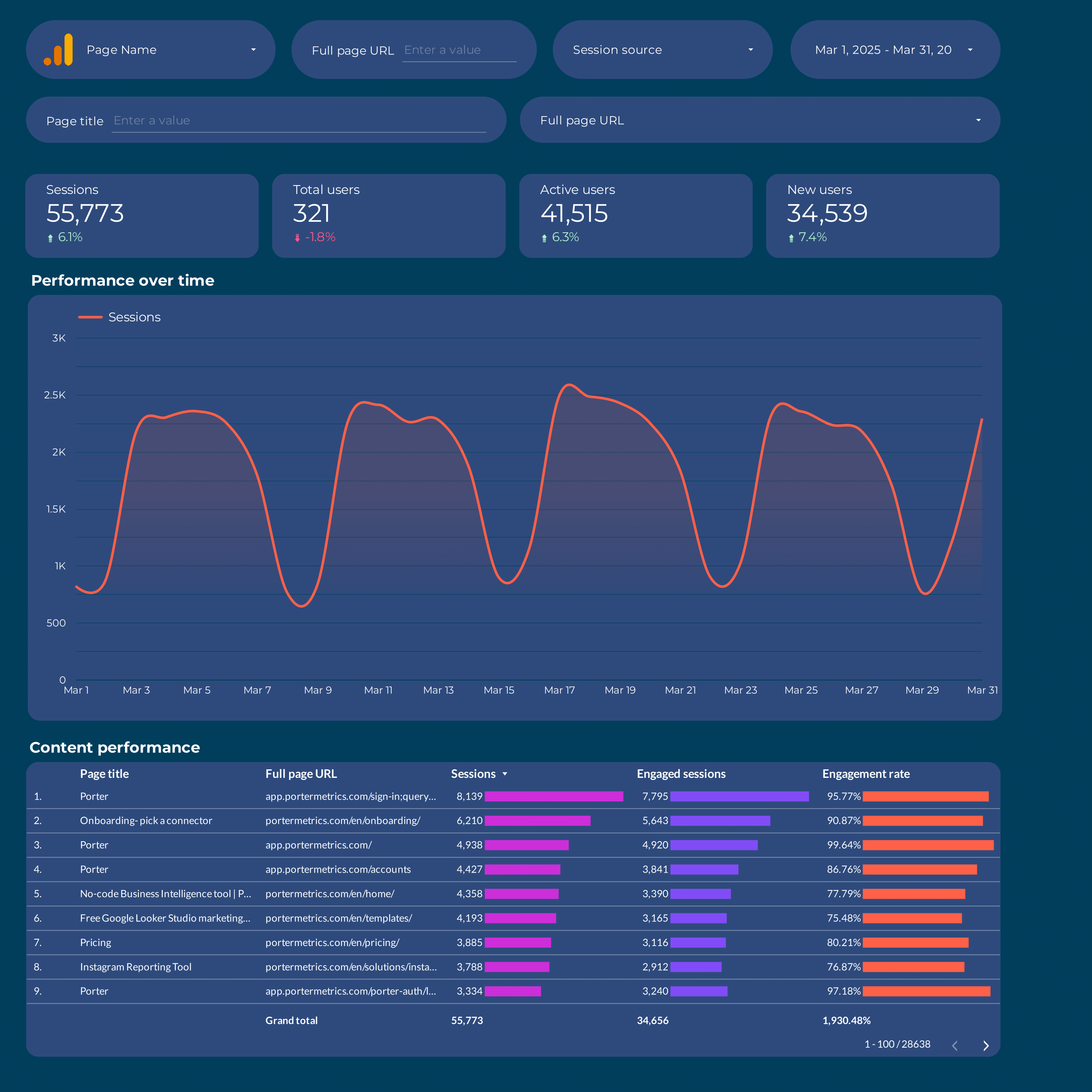
Content marketing Dashboard template
The Content Marketing Dashboard Template is designed to provide marketers with a streamlined view of their content performance using Google Analytics 4. This template integrates essential metrics and dimensions to help you track and analyze your content marketing efforts effectively.
With this dashboard, you can:
- Monitor user engagement metrics such as page views, session duration, and bounce rate.
- Analyze traffic sources to understand where your audience is coming from and how they interact with your content.
- Evaluate conversion rates to measure the success of your content in driving desired actions.
- Track audience demographics to tailor your content strategy to your target audience.
This template leverages the advanced capabilities of Google Analytics 4 to provide a detailed overview of your content marketing performance, enabling data-driven decision-making.
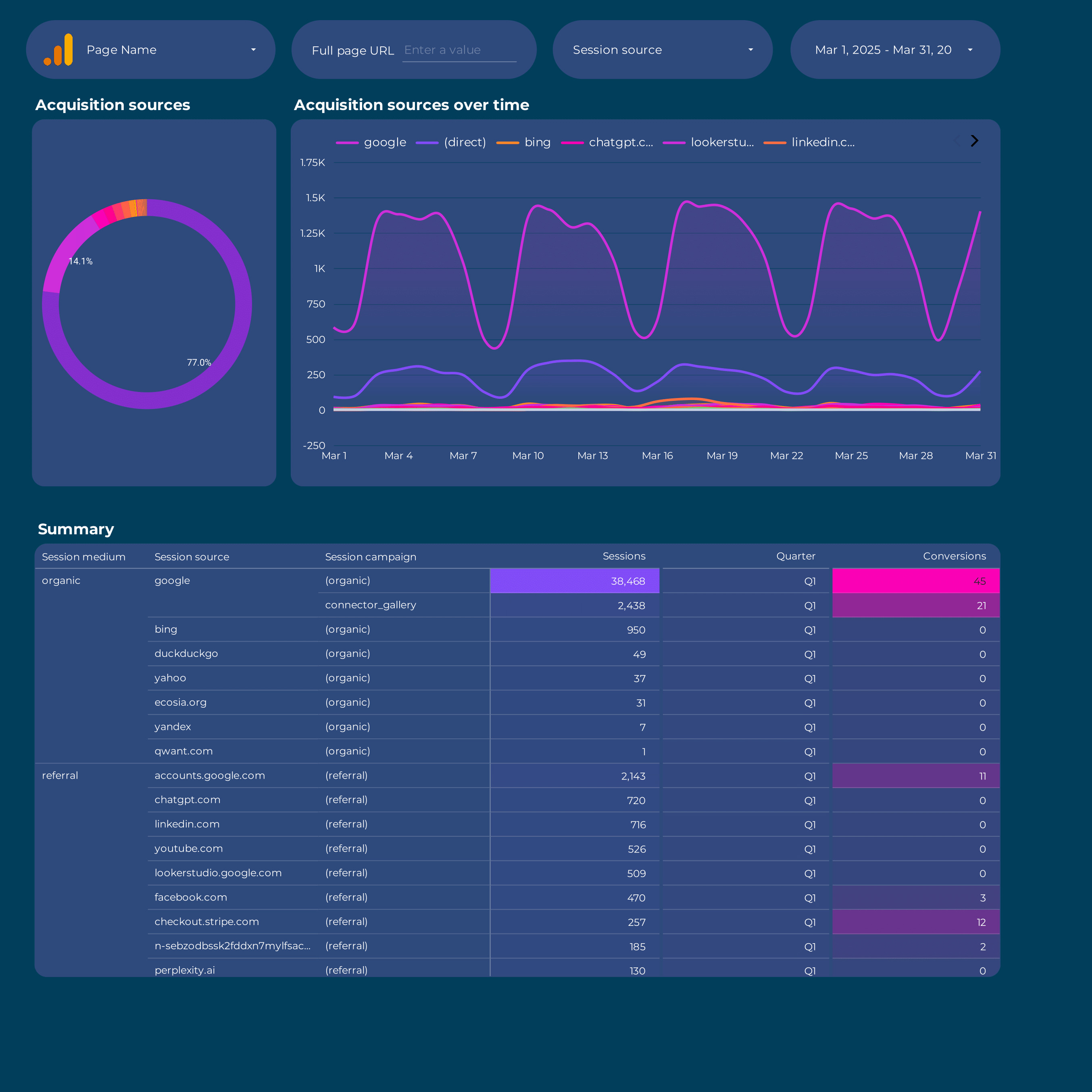
Acquisition Dashboard template
The Acquisition Dashboard template is designed for marketers utilizing Google Analytics 4 to track and analyze their marketing efforts. This dashboard provides insights into various marketing channels, including Content Marketing and PPC campaigns.
With this dashboard, users can:
- Monitor traffic sources and understand which channels drive the most visitors.
- Analyze user behavior and engagement metrics to optimize marketing strategies.
- Track the performance of PPC campaigns and assess ROI.
- Evaluate the effectiveness of content marketing efforts through detailed analytics.
Utilize this dashboard to make data-driven decisions and improve marketing outcomes by leveraging the capabilities of Google Analytics 4.
